The 1935 Silver Dollar value ranges from $36-$85 depending on mint mark and condition. San Francisco “S” mint coins are more valuable ($40-$85 circulated) than Philadelphia no-mint-mark versions ($36-$76 circulated). Uncirculated examples command premium prices. Common errors increasing value include doubled die, off-center strikes, and die cracks. Key value factors include coin condition, professional grading certification, and silver content which provides baseline melt value. The “S” mint had 1,964,000 coins produced, making it relatively common but still collectible, especially in higher grades.
The final year of Peace Dollar production holds special significance for collectors, and if you’ve inherited or discovered a 1935 silver dollar, you’re holding a piece of numismatic history with tangible value. Unlike earlier Peace Dollars that saw massive production runs, the 1935 issue came in two distinct varieties—the San Francisco “S” mint and Philadelphia no-mint-mark versions—each commanding different premiums based on condition and rarity. Understanding what separates a $40 coin from one worth hundreds requires knowing the specifics of grading, mint marks, and potential errors.
Identifying Your 1935 Peace Dollar’s Mint Mark
The mint mark location determines which facility struck your coin, directly impacting its value. Flip your 1935 Peace Dollar over to the reverse side and examine the area just above the “DO” in “DOLLAR,” between the eagle’s tail feathers and the rim. An “S” indicates San Francisco Mint production, while no letter means Philadelphia struck the coin.
San Francisco produced 1,964,000 Peace Dollars in 1935, making it the more common variety despite what some believe. Philadelphia’s mintage totaled 1,576,000 pieces—slightly lower production but both facilities created enough coins that neither qualifies as exceptionally rare in absolute terms. The survival rate matters more than raw mintage numbers, as many Peace Dollars from both mints entered circulation and sustained wear over decades.
Genuine 1935 Peace Dollars contain 0.77344 troy ounces of silver in their 90% silver composition, providing a melt value floor around $18-$22 depending on current silver spot prices. Any 1935 Peace Dollar trades above melt value due to collector demand, with premiums escalating based on preservation quality.
Current Market Values for 1935-S Peace Dollars
The San Francisco mint mark typically commands stronger prices across most grade levels. Here’s what Heritage Auctions and NGC price guides reflect for 1935-S dollars as of 2024:
| Grade | Value Range |
|---|---|
| Good (G-4) | $32-$38 |
| Very Fine (VF-20) | $40-$52 |
| Extremely Fine (EF-40) | $48-$65 |
| About Uncirculated (AU-50) | $55-$85 |
| MS-60 | $85-$145 |
| MS-63 | $165-$285 |
| MS-64 | $425-$750 |
| MS-65 | $1,200-$2,400 |
| MS-66 | $8,500-$15,000 |
The dramatic jump from MS-64 to MS-65 reflects scarcity at higher grades. PCGS CoinFacts reports only 1,847 examples graded MS-65 or higher from all submissions, representing roughly 0.09% of the original mintage. An MS-66 specimen sold for $14,100 at Stack’s Bowers Galleries in January 2023, while an exceptionally preserved MS-67 achieved $52,875 at Heritage Auctions in April 2022.
Circulated 1935-S Peace Dollars in typical VF to EF condition consistently sell in the $45-$68 range at major dealers like APMEX and JM Bullion. The silver content alone provides a safety net, but collector demand pushes even heavily worn examples to $35-$42, approximately 70-90% above melt value.
Philadelphia 1935 Peace Dollar Values
The no-mint-mark 1935 Peace Dollars from Philadelphia generally trade at modest discounts to their San Francisco counterparts in circulated grades, though the gap narrows in mint state:
| Grade | Value Range |
|---|---|
| Good (G-4) | $30-$36 |
| Very Fine (VF-20) | $38-$48 |
| Extremely Fine (EF-40) | $45-$60 |
| About Uncirculated (AU-50) | $52-$76 |
| MS-60 | $80-$135 |
| MS-63 | $155-$265 |
| MS-64 | $385-$685 |
| MS-65 | $950-$1,850 |
| MS-66 | $6,000-$11,500 |
A Philadelphia MS-65 sold for $1,645 at GreatCollections in March 2024, while an MS-66 example brought $9,987 at Heritage Auctions in August 2023. The population reports show Philadelphia 1935 dollars slightly scarcer in gem grades, with PCGS recording 1,523 coins at MS-65 or better through early 2024.
The circulated market for Philadelphia 1935 dollars centers around $42-$62 for VF to EF grades, with dealers typically offering $35-$55 depending on exact condition and current silver prices. Bold Precious Metals data from November 2024 shows wholesale bid prices at $38 for VF-20 and $56 for EF-45 Philadelphia examples.
Valuable Error Varieties to Search For
Manufacturing imperfections can multiply a 1935 Peace Dollar’s value substantially when they’re dramatic and verifiable. Professional authentication through NGC or PCGS becomes essential for errors, as doctored or damaged coins frequently get misidentified as genuine minting mistakes.
Doubled Die Obverse (DDO): The most valuable 1935 error shows doubling on Liberty’s portrait, particularly visible in her eye, nose profile, and hair strands. A 1935-S DDO in MS-63 condition sold for $1,840 at Heritage Auctions in June 2023—more than six times the value of a normal MS-63 example. The doubling results from die misalignment during the hubbing process, creating a ghost-like secondary image. Check the motto “IN GOD WE TRVST” and the date with 5x magnification for separation lines indicating doubled dies.
Off-Center Strikes: When the planchet (blank coin) wasn’t properly centered in the press, partial designs result. A 1935-S struck 15% off-center with full date visible achieved $875 in AU-55 condition at GreatCollections in September 2023. More dramatic off-center strikes (25-40%) command $1,200-$2,800 depending on eye appeal and whether the date remains visible. A 35% off-center 1935 Philadelphia dollar graded MS-62 sold for $2,350 in February 2024.
Die Cracks and Cuds: As dies wore from striking thousands of coins, cracks developed that transferred raised lines onto coins. Minor die cracks add $10-$30 to common-date Peace Dollars, but major cracks or “cuds” (where metal fills an area where the die broke away) can add $150-$400. A 1935-S with a prominent die crack through Liberty’s face sold for $285 in EF-40 grade versus the typical $52 for that condition.
Clipped Planchets: When the metal strip feeding the press overlapped, blank planchets were punched with portions missing. Straight clips (5-10% missing) add $75-$185 to a 1935 Peace Dollar, while curved clips showing the original strip edge add $125-$325. A 1935 Philadelphia dollar with an 8% straight clip graded AU-50 brought $235 at auction versus the standard $52-$76 range.
Wrong Planchet Errors: Extremely rare but documented cases exist where 1935 Peace Dollar dies struck foreign planchets or planchets intended for other denominations. No verified 1935 wrong planchet errors have appeared at major auctions since 2015, but similar-era wrong planchet Peace Dollars have achieved $8,000-$15,000 when authenticated.
Professional Grading Impact on Selling Price
The difference between self-assessment and third-party grading often determines whether you receive $50 or $500 for the same coin. NGC and PCGS employ consistent standards using the 70-point Sheldon Scale, where circulation wear determines grades from Good (G-4) through About Uncirculated (AU-58), while mint state coins grade MS-60 through MS-70 based on bag marks, luster, and strike quality.
Certification costs $20-$45 per coin depending on service level and declared value, but the investment returns dividends on nicer pieces. An uncertified 1935-S that appears uncirculated might sell for $90-$120 to a cautious buyer, while the same coin graded MS-63 by PCGS commands $165-$285 because the authentication removes doubt. Heritage Auctions data from 2023 shows certified Peace Dollars selling for 35-85% premiums over identical raw coins in dealer inventories.
The grading sweet spot for 1935 Peace Dollars sits at MS-63 to MS-64. Below MS-63, certification costs consume too much of the value premium for common dates. Above MS-64, the population scarcity and price jumps make grading essential. A 1935-S in MS-64 versus MS-65 represents perhaps a 1-2 point difference in technical quality but a $700-$1,600 difference in market value—making the $35 grading fee irrelevant.
Submit potentially high-grade coins (those appearing uncirculated with minimal marks and strong luster) to NGC or PCGS before selling. Local coin shops offer submission services if you’re unfamiliar with the process, typically charging $10-$15 handling fees. Turnaround times run 20-35 business days for standard service, with express options available for premium fees.
Maximizing Your 1935 Peace Dollar’s Sale Price
Selling channels dramatically affect realized prices. Local coin shops offer immediate payment but typically bid 60-75% of retail value to cover overhead and profit margins. A 1935-S in EF-40 worth $52-$65 retail might generate a $35-$45 offer from local dealers. This works fine for quick liquidation but leaves money on the table for better pieces.
Online marketplaces like eBay connect you directly with collectors willing to pay closer to retail, though seller fees (12-13% combined) and shipping costs ($5-$8 for insured packages) reduce net proceeds. Heritage Auctions sold a 1935 Philadelphia MS-64 for $588 in October 2023, where the consignor netted approximately $500 after the 15% buyer’s premium and seller commission. Raw coins under $200 often fare better through eBay, while certified examples over $300 benefit from major auction houses’ established buyer bases.
GreatCollections offers a middle path with no seller fees and direct bidding from serious collectors. They specialize in certified coins and reported selling 347 Peace Dollars during November 2024 alone, including a 1935-S MS-65 that realized $1,755. The trade-off involves longer timelines—consignments appear in auctions 3-6 weeks after submission versus immediate eBay listings.
For common circulated examples worth $40-$80, local coin shows provide competitive pricing without shipping risks or waiting periods. Dealers at shows typically offer 70-85% of retail since their overhead runs lower than shops, and they compete directly for inventory. Bring your 1935 Peace Dollar in a protective flip or holder—never clean it, as any attempt at polishing destroys the natural patina collectors value and can reduce worth by 40-60%.
Authentication Tips to Avoid Counterfeits
The 1935 Peace Dollar’s modest values in circulated grades make counterfeiting less common than high-value dates like 1928 or 1934-S, but fakes exist in the marketplace, particularly targeting uncirculated grades. Chinese-manufactured replicas using incorrect silver alloys have proliferated since 2018, identifiable through several diagnostic points.
Genuine 1935 Peace Dollars weigh 26.73 grams with less than 0.1 gram variance. Digital scales accurate to 0.01 gram cost under $15 and immediately flag counterfeits that weigh 24-25 grams (common for base metal cores) or over 27.5 grams (pure silver fakes lacking the proper copper alloy). The diameter measures exactly 38.1mm—counterfeits frequently measure 38.5-39mm due to die manufacturing imprecision.
The reeded edge contains 188-192 reeds around the circumference on authentic pieces. Counterfeits often show 175-180 reeds or irregularly spaced reeding. Use a jeweler’s loupe to examine Liberty’s hair strands above her ear—genuine coins display sharp, distinct lines while fakes show mushy, blurred details from poor die work.
Sound testing provides another verification method. Balance the coin on your fingertip and tap the edge with another silver coin. Authentic silver dollars produce a clear, sustained ring lasting 5-8 seconds at approximately 4,200 Hz frequency. Base metal fakes create dull thuds, while lower-silver-content counterfeits ring at noticeably different pitches. Smartphone apps like Bullion Test can analyze the acoustic signature, though this method works best with experience.
When purchasing online, insist on clear photographs showing both obverse and reverse at angles revealing the fields’ luster. Authentic Peace Dollars display cartwheel luster in mint state—rotating the coin under light creates moving bands of brightness radiating from the center. Counterfeits typically show uniform, lifeless surfaces or artificial-looking radial lines. PCGS and NGC certification eliminates authentication concerns entirely, making the premium for certified coins worthwhile for purchases over $150.
Building a Complete 1935 Peace Dollar Collection
Collectors pursuing both 1935 varieties face manageable costs compared to earlier Peace Dollar dates. Assembling a circulated set with one Philadelphia and one San Francisco example in VF-EF condition runs $85-$115 total, providing an affordable entry into Peace Dollar collecting. The relatively high mintages ensure availability through most dealers and online platforms.
Pursuing mint state examples elevates both challenge and expense. A matched pair of MS-63 coins (one from each mint) costs $320-$550 depending on market conditions and whether you buy certified or raw coins. Moving to MS-64 pushes the investment to $810-$1,435 for both pieces, while MS-65 examples together command $2,150-$4,250.
The registry set approach through PCGS or NGC adds competitive dimension to collecting. Submitting your 1935 Peace Dollars to their registry programs allows comparison with other collectors’ sets worldwide. As of January 2025, the top-ranked 1935 Peace Dollar set on the PCGS Registry contains an MS-66 Philadelphia coin and MS-66+ San Francisco piece, representing approximately $19,000 in total value for just these two coins.
Error variety hunters can build fascinating specialized collections focusing on die states, die cracks, and other manufacturing variations unique to 1935 production. Unlike intentional mint varieties, each die crack develops differently, making every example unique. Budget-conscious collectors find repunched mint marks, minor die cracks, and retained lamination errors in the $75-$200 range—affordable ways to own genuine minting mistakes.
Consider purchasing example coins in multiple grades to understand how wear progresses. A VF-20, EF-40, AU-50, and MS-63 representing the same date and mint mark costs roughly $320-$480 combined but teaches more about grading than examining a single coin. This hands-on education prevents expensive mistakes when evaluating future purchases and helps identify overgraded coins that sellers misrepresent.
Where to Start Your 1935 Peace Dollar Journey
Begin by examining any 1935 Peace Dollars you already own or can access through family collections. Check the mint mark location first, then assess overall condition honestly—most inherited coins show VF to EF wear from pocket circulation. Compare your examples against grading images on PCGS CoinFacts or NGC’s coin explorer, which provide free high-resolution photographs of various grades.
Local coin shops offer hands-on learning opportunities where you can examine multiple examples and ask questions without purchase pressure. Bring your 1935 dollars for informal evaluation—reputable dealers provide honest assessments even if they’re not buying that day. This builds relationships for future transactions and helps calibrate your grading eye against professional opinions.
Online research through completed eBay sales and auction archives shows actual realized prices rather than asking prices. Heritage Auctions maintains free archives dating back decades—search “1935 Peace Dollar” to review hundreds of transactions with detailed photographs and final hammer prices. This research prevents overpaying and identifies legitimate pricing expectations across conditions.
Whether your 1935 Peace Dollar proves to be a common VF circulated piece worth $45 or an exceptional MS-65 gem commanding $1,500, understanding its specific characteristics, proper grading, and current market conditions ensures you make informed decisions. The Peace Dollar series represents accessible silver dollar collecting with strong liquidity—these coins trade actively with transparent pricing, making them ideal for both beginning collectors and experienced numismatists seeking historically significant precious metal holdings.
You may be interested:
- 1859 Indian Head Penny Coin Value Complete Errors List And No Mint Mark Worth Guide For Collectors
- 1911 V Nickel Coin Value Guide Complete Errors List And No Mint Mark Worth Today
- 1902 Dime Coin Value Complete Errors List With O S And No Mint Mark Worth Guide
- 1788 Quarter Coin Value Complete Guide Errors List And D S P Mint Mark Worth Revealed
- 1776 To 1976 Bicentennial Half Dollar Coin Value Complete Errors List And What Your D S And No Mint Mark Coins Are Actually Worth
- 1990 Penny Coin Value Errors List How D S And No Mint Mark Pennies Are Worth Thousands Of Dollars

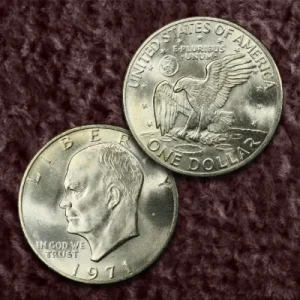
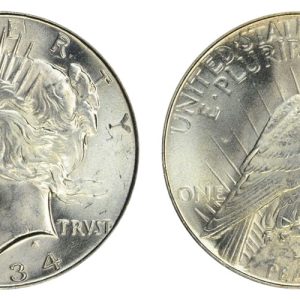
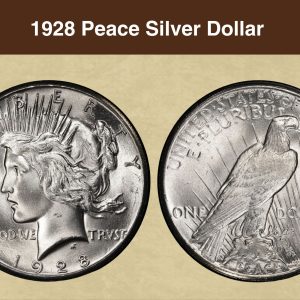
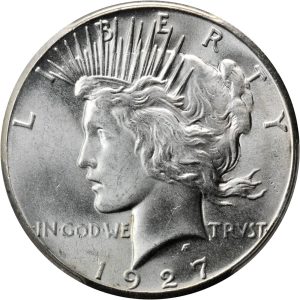
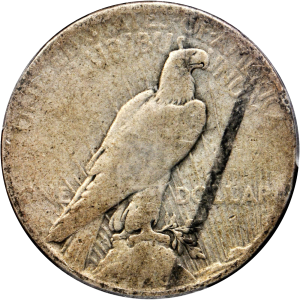
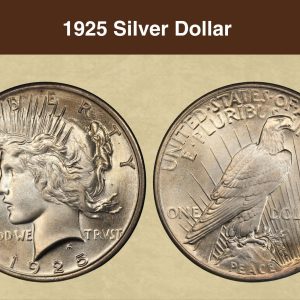
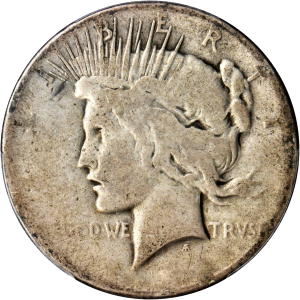
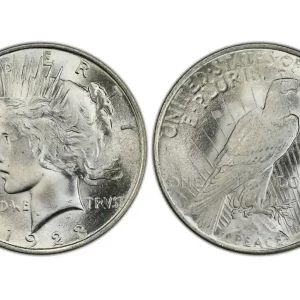
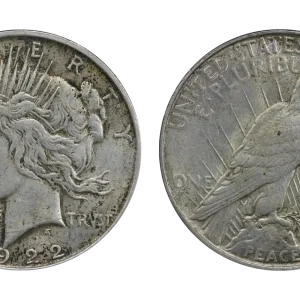
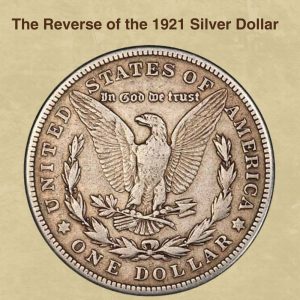
How much is a 1935 S silver dollar worth?
A 1935-S Peace dollar is worth between approximately $47.50 and $250 for circulated coins, and can sell for much more in uncirculated condition, potentially thousands of dollars for high-grade examples. The specific value depends on the coin’s condition, rarity, and specific features.
What is the error on the 1935 Walking Liberty coin?
An exceptionally rare type of error. The entire right side of the front of Walking Liberty on this coin was struck through foreign object in error at the Philadelphia mint. There appear to be rows of serial numbers or digits in the strike. There’s a good probability that this was a cigarette or a gum wrapper.
Where is the mint mark on a 1935 silver dollar?
Location: Look on the reverse (back) of the coin. Specifics: Find the word “ONE” and look below it, between the tip of the eagle’s folded wing and the coin’s rim. Philadelphia Mint: Coins from this mint will have no mint mark. Denver Mint: Coins from this mint will have a “D”. San Francisco Mint: Coins from this mint will have an “S”.
How rare is a 1935 silver dollar?
1935 Peace Dollars Are Common In Circulated Condition : This is another date that is seldom encountered in bulk lots of Peace dollars. If you desire an EF or AU example you should be able to find one with no great effort.